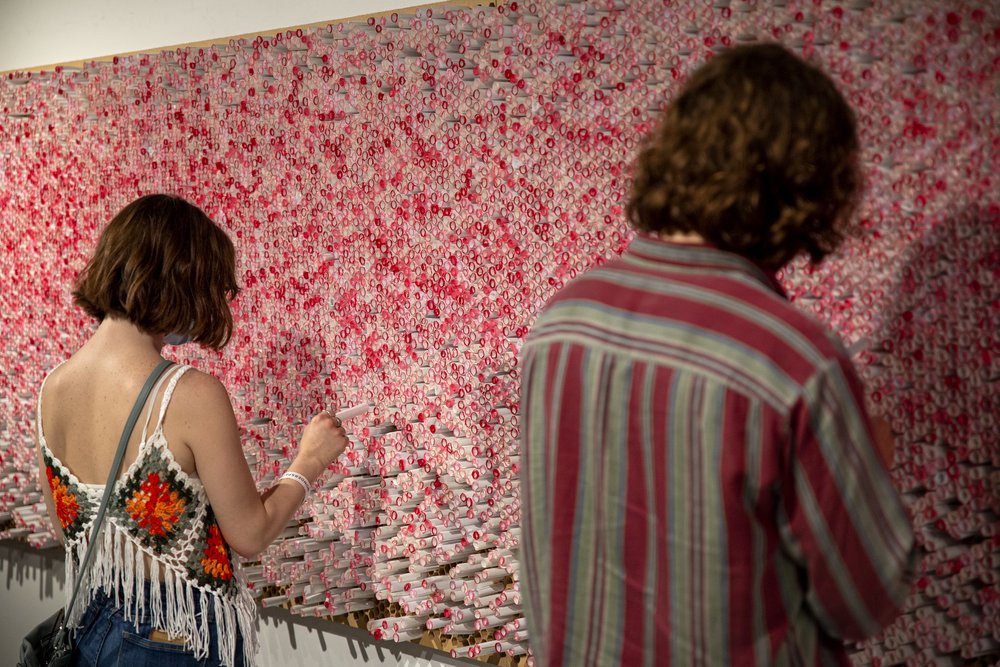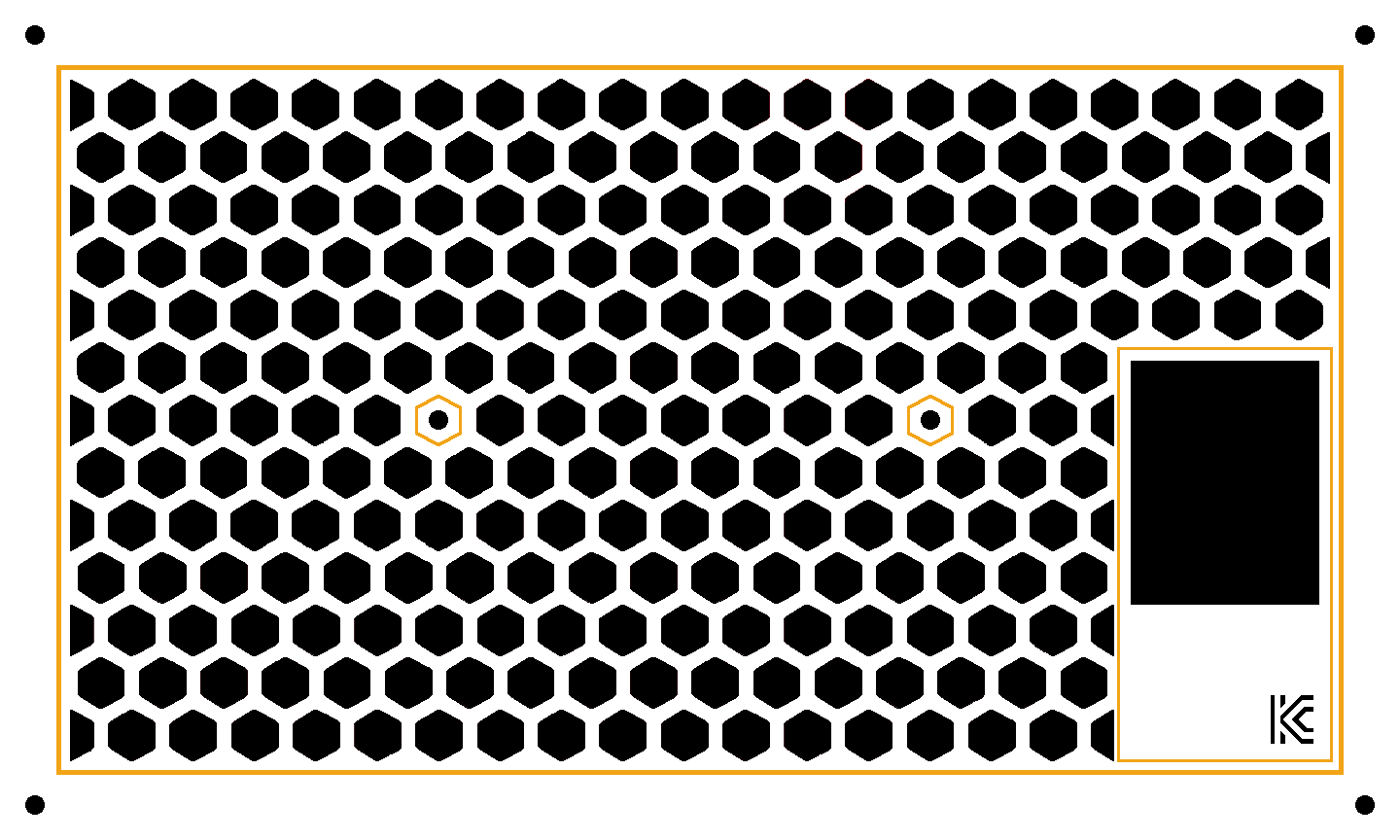Movie Honeycomb
Making movie night a no-brainer
Background
The movie honeycomb is one of my laser cut projects that was both fun to make and enjoyable to use. This came to mind in solving a long-held with unexpected inspiration.
During my fifth year of undergrad at UT Austin I discovered the Internet Archive, a US government sponsored historical archive of media, software, and internet pages. It is a magical place. You can use the Wayback Machine to see what some websites looked like in the past, or use their library function to check out books, movies, or audio. You can also sometimes find user-uploaded movies that had entered to public domain, free to watch.
Barna and I love to watch movies together, and got especially into black and white films. However, actually picking a movie was somewhat of a chore. Everyone who has spent 20 minutes scrolling through their Netflix catalog knows how hard it can be to find a movie that everyone wants to watch. The worst part of this is that in the back of your head, you always know that there are good movies you would both like. You just can’t remember them right now.
The other worst thing is talking about movies with other people. Especially with movie buffs. Everyone has had this conversation:
- Movie Guy: How was your weekend?
- You: It was relaxing. Stayed in, watched some movies.
- Movie Guy: Nice! What did you watch?
- You: We watched
X. We have never seen theX series. - Movie Guy: WHAT?! YOU’VE NEVER SEEN [Star Wars, Tropic Thunder, The Godfather, etc.]???
Annoying. And it hurts because movie guy is making a great point. You’ve spent how long aimlessly scrolling through your Hulu and it never ocurred to you to watch one of the classics? For shame.
We needed our own catalog. Not like the Netflix catalog. One where every movie is one you would want to watch. One where you could almost pick a movie at random and it would be a good time.
Inspiration
That same year Barna and I had a free weekend and went to Wonderspaces, an interactive art center in Austin. There are normally a dozen or so installations to enjoy, and it takes about two hours to get through.
One exhibit that really stuck with me was The Last Word by art collective Illegal Art. It was a large wooden board on a wall, with holes cut in a dense honeycomb pattern. In each cell was a rolled slip of paper, dyed red on one end. If the red end of the roll was visible, that slip had been written on. If not, it was free to use.



The intention was for anonymous individuals to share last words to another person, dead or alive, that they wished they had shared. I found it really touching, and have since gone to revisit.
Aside from the artistic merit, there were a few things that stood out to me.
- The binary system to signal if a slip was used.
- The honeycomb. Did you know hexagons are the largest regular polygon that can be tiled?
- The analog record keeping. There was a real convenience to just writing on a piece of paper and storing it in a hole in the wall.
Good Artists Borrow
This was just the stroke of inspiration I had needed. Previously, I had been entertaining the idea of using some kind of a digital roulette wheel to help pick out a movie. Barna had even showed me a scratch-off ticket from Amazon that would reveal which movie you should watch. But this was much better.
This piece is remarkable because it is interesting to look at both from close and afar. It reminded me of Edward Tufte’s concept of micro-macro readings from his book Envisioning Information. Second, it was simple, to the point where the general public could be trusted to reliably interact with it. These are signs of a great system.
So I borrowed it. I decided this would be a perfect way of keeping track of great movies to watch. Barna and I would develop a list of great movies that we both agreed we would like to watch. Old movies, new movies, animated, rom-coms, it did not matter. The only criteria is that these were movies that sounded good.
Next, we would write these movies on slips of paper, much like in the exhibit. Once marked, they would be rolled up and placed into a similar honeycomb with the unmarked end facing outwards. Now, any time that we wanted to watch a movie, we could select at random one of the slips showing white. After watching the movie, we would write the date and some remarks on the paper, then return it to the honeycomb with the red side facing out. As we watched more movies, we would be able to see our progress against our list visually.
Execution
I am not entirely sure how Illegal Art were able to drill so many deep hexagonal holes in such a large contiguous piece of wood. Perhaps they had a massive router? That’s why they get to be at Wonderspaces. I was going to need a different approach.
Design
I did not have access to a giant router at the time. I did, however, have access to Texas Inventionworks’ awesome laser cutting tables. Instead of making the honeycomb out of a single 3D piece, I was going to create it from a series of 2D slices, similar to how a 3D printer slices a model.
Whenever I start brainstorming on a new project, I always like to start with pen and paper. No tools, no apps, no waiting for startup. Just doodle. I have yet to find a software solution for drawing, labeling, and doing math all in one place.
Here I outlined exactly how large I wanted each of the holes to be, the dimensions of the cut, and how I was going to combine my slices. When working on a project that is hard to visualize, I always like to start from the outside in.
Imagine it like you are a sculptor cutting from a stone. Get the outside of the piece first, then work your way in. When working on the smaller details you can relax and ignore the bigger picture, because you know you have already handled it. Once you are happy with the details, return to the big picture once more. Check from top to bottom again to make sure it looks good.





Armed with a plan, I opened my favorite image editor GIMP. I converted that plan into some images, overlaying them to ensure they would play nicely together.



Fabrication
Most of the hard work was done in the design phase. Once I had my vector files, this was a series of quick laser cuts. Once each of the four layers were cut I fastened them with barrel screws, separated by quarter inch spacers. Before the top plate went on I inserted the box assembly for holding extra pens and paper slips.
<div class="row mt-3">
<div class="col-sm mt-3 mt-md-0">
{% include video.liquid path="assets/video/projects/laser-work/movie-honeycomb/IMG_6701.mp4" class="img-fluid rounded z-depth-1" controls=true
autoplay=true %}
</div>
<div class="col-sm mt-3 mt-md-0">
{% include video.liquid path="assets/video/projects/laser-work/movie-honeycomb/IMG_6704.MOV" class="img-fluid rounded z-depth-1" controls=true %}
</div>
</div>
<div class="caption">So satisfying!</div>


Results
I suppose I could have stained this, but I did not want to tamper too much with the wood. After laser cutting, it has this warm campfire smell that I really like. This project has saved a lot of time scrolling through streaming sites, and has served as a fun reminder to have a movie night more often.
This was also one of my first big laser cutting projects where I needed to do a lot of planning. If you enjoy

